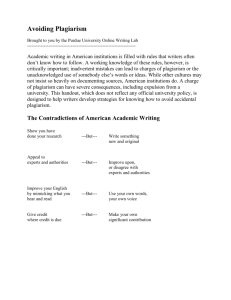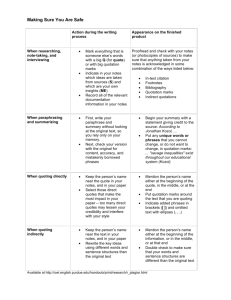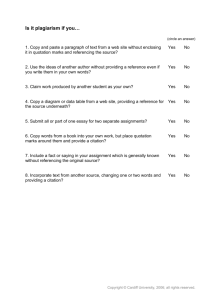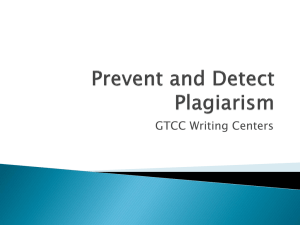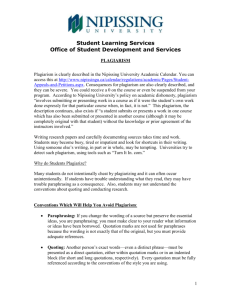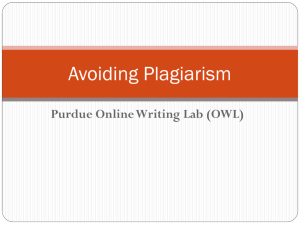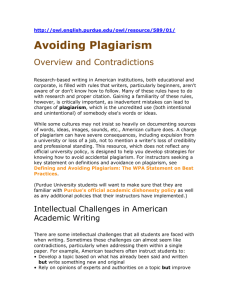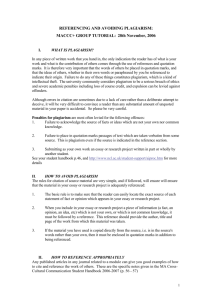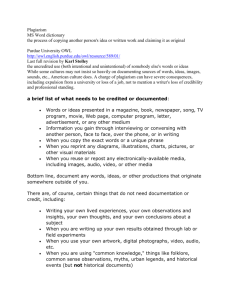Avoiding Plagiarism Brought to you by the Purdue University Online
advertisement
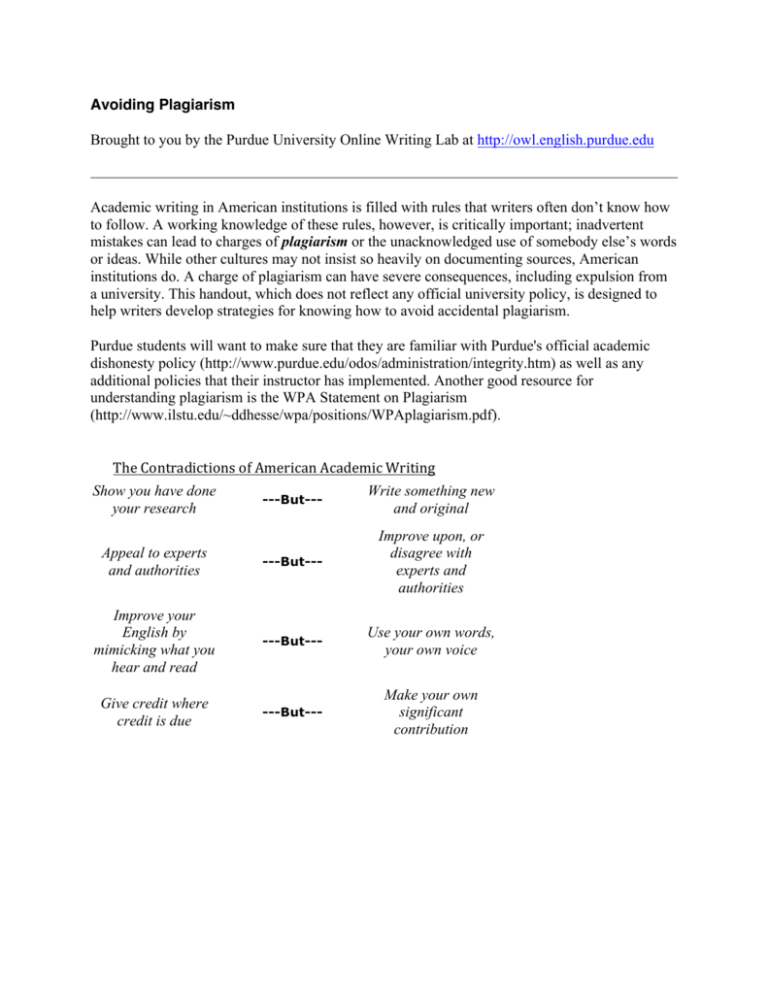
Avoiding Plagiarism Brought to you by the Purdue University Online Writing Lab at http://owl.english.purdue.edu Academic writing in American institutions is filled with rules that writers often don’t know how to follow. A working knowledge of these rules, however, is critically important; inadvertent mistakes can lead to charges of plagiarism or the unacknowledged use of somebody else’s words or ideas. While other cultures may not insist so heavily on documenting sources, American institutions do. A charge of plagiarism can have severe consequences, including expulsion from a university. This handout, which does not reflect any official university policy, is designed to help writers develop strategies for knowing how to avoid accidental plagiarism. Purdue students will want to make sure that they are familiar with Purdue's official academic dishonesty policy (http://www.purdue.edu/odos/administration/integrity.htm) as well as any additional policies that their instructor has implemented. Another good resource for understanding plagiarism is the WPA Statement on Plagiarism (http://www.ilstu.edu/~ddhesse/wpa/positions/WPAplagiarism.pdf). The Contradictions of American Academic Writing Show you have done your research ---But--- Write something new and original Appeal to experts and authorities ---But--- Improve upon, or disagree with experts and authorities Improve your English by mimicking what you hear and read ---But--- Use your own words, your own voice Give credit where credit is due ---But--- Make your own significant contribution Since teachers and administrators may not distinguish between deliberate and accidental plagiarism, the heart of avoiding plagiarism is to make sure you give credit where it is due. This may be credit for something somebody said, wrote, emailed, drew, or implied. Choosing When to Give Credit Need to Document • • • • • When you are using or referring to somebody else’s words or ideas from a magazine, book, newspaper, song, TV program, movie, Web page, computer program, letter, advertisement, or any other medium When you use information gained through interviewing another person When you copy the exact words or a "unique phrase" from somewhere When you reprint any diagrams, illustrations, charts, and pictures When you use ideas that others have given you in conversations or over email No Need to Document • • • • When you are writing your own experiences, your own observations, your own insights, your own thoughts, your own conclusions about a subject When you are using "common knowledge" — folklore, common sense observations, shared information within your field of study or cultural group When you are compiling generally accepted facts When you are writing up your own experimental results Making Sure You Are Safe Action during the writing process When researching, note-taking, and interviewing • • • When paraphrasing and summarizing • • When quoting directly • • Mark everything that is someone else’s words with a big Q (for quote) or with big quotation marks Indicate in your notes which ideas are taken from sources (S) and which are your own insights (ME) Record all of the relevant documentation information in your notes Appearance on the finished product Proofread and check with your notes (or photocopies of sources) to make sure that anything taken from your notes is acknowledged in some combination of the ways listed below: • • • • • In-text citation Footnotes Bibliography Quotation marks Indirect quotations First, write your paraphrase and summary without looking at the original text, so you rely only on your memory. Next, check your version with the original for content, accuracy, and mistakenly borrowed phrases • Begin your summary with a statement giving credit to the source: According to Jonathan Kozol, ... Put any unique words or phrases that you cannot change, or do not want to change, in quotation marks: ... "savage inequalities" exist throughout our educational system (Kozol). Keep the person’s name near the quote in your notes, and in your paper Select those direct quotes that make the most impact in your paper -- too many direct quotes may lessen your credibility • • • • Mention the person’s name either at the beginning of the quote, in the middle, or at the end Put quotation marks around the text that you are quoting Indicate added phrases in brackets ([ ]) and omitted text with ellipses and interfere with your style When quoting indirectly • • Keep the person’s name near the text in your notes, and in your paper Rewrite the key ideas using different words and sentence structures than the original text (. . .) • • Mention the person’s name either at the beginning of the information, or in the middle, or at that end Double check to make sure that your words and sentence structures are different than the original text Deciding if Something is "Common Knowledge" Material is probably common knowledge if . . . • • • You find the same information undocumented in at least five other sources You think it is information that your readers will already know You think a person could easily find the information with general reference sources
